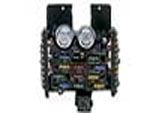
Electrical work does not have to be a mystery. Unlike bodywork (which is more akin to art than science), electricity is governed by immutable laws of nature, so getting a handle on electrical gremlins is not a circuitous enigma. It’s totally amenable to a logical, step-by-step troubleshooting approach. All it takes is fusing mechanical expertise with “current” sense. To help our readers find out “watts” happening so they can “ohm-in” on the cause of their charging and starting system ailments before the sickness becomes “terminal,” we got wired-in by electrical experts Painless Performance, received the acid truth from battery manufacturer Optima, and obtained a full-charging account from Powermaster, manufacturer of extreme high-output street and racing alternators.
These companies’ current thinking on diagnosing (and curing) common electrical ills forms the basis for the following diagnostic procedures, which should be followed step-by-step in numeric order. Although the photos are specifically applicable to GM vehicles, the overall procedure is similar for other makes, except as noted. Performing the tests requires a test light, jumper wires, and a multimeter capable of reading volts and ohms. The procedures do not require an ammeter; while a nice tool to have, one that’s capable of reading high-current automotive electrical circuits is fairly expensive.
Finally, a special thanks to Alex Koufos (’72 Chevelle and ’80 El Camino) and Mark Farhat (’71 Chevelle) for spending a Sunday afternoon serving as photo guinea-pigs.
Check out the sidebars below to help sort out your electrical woes.